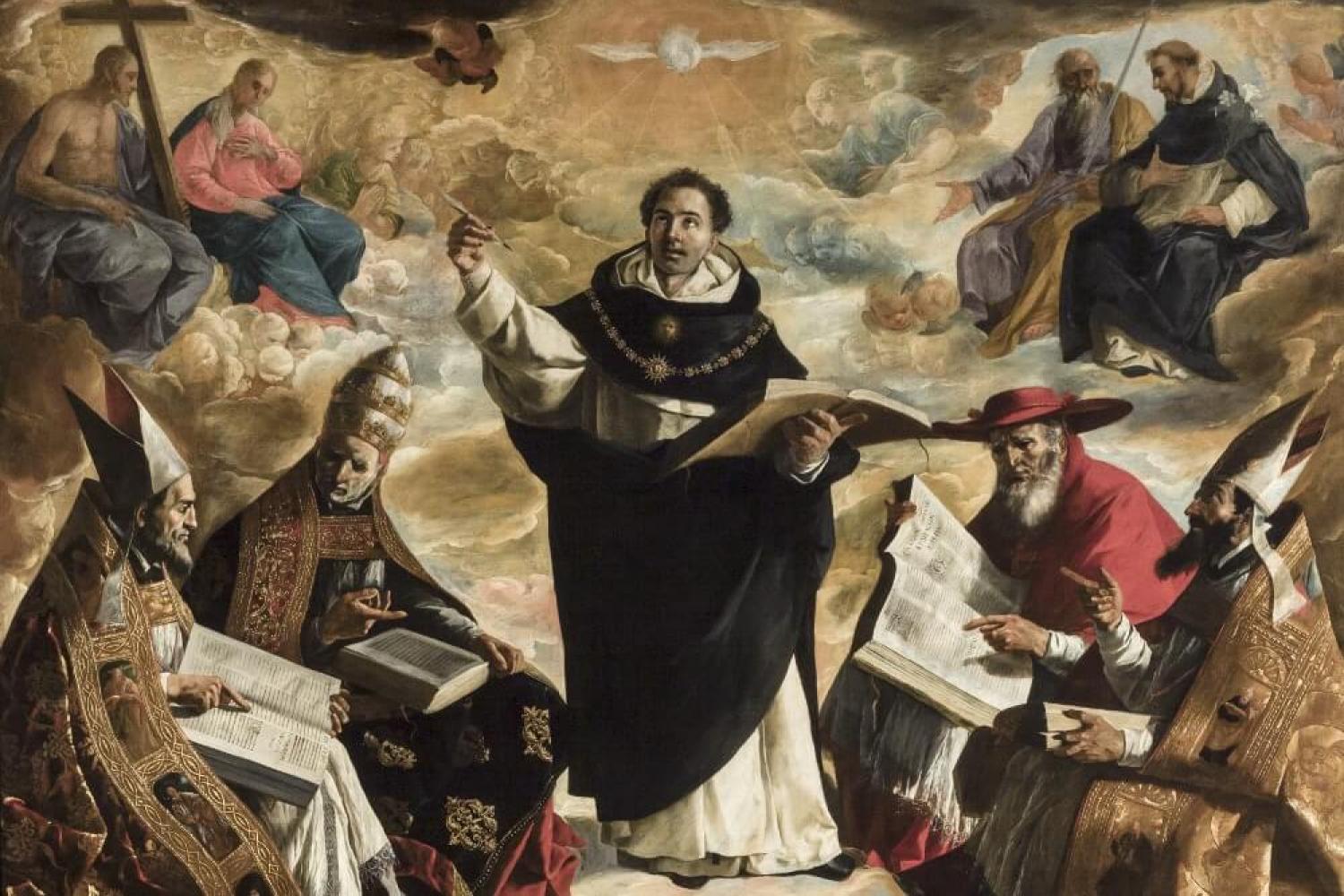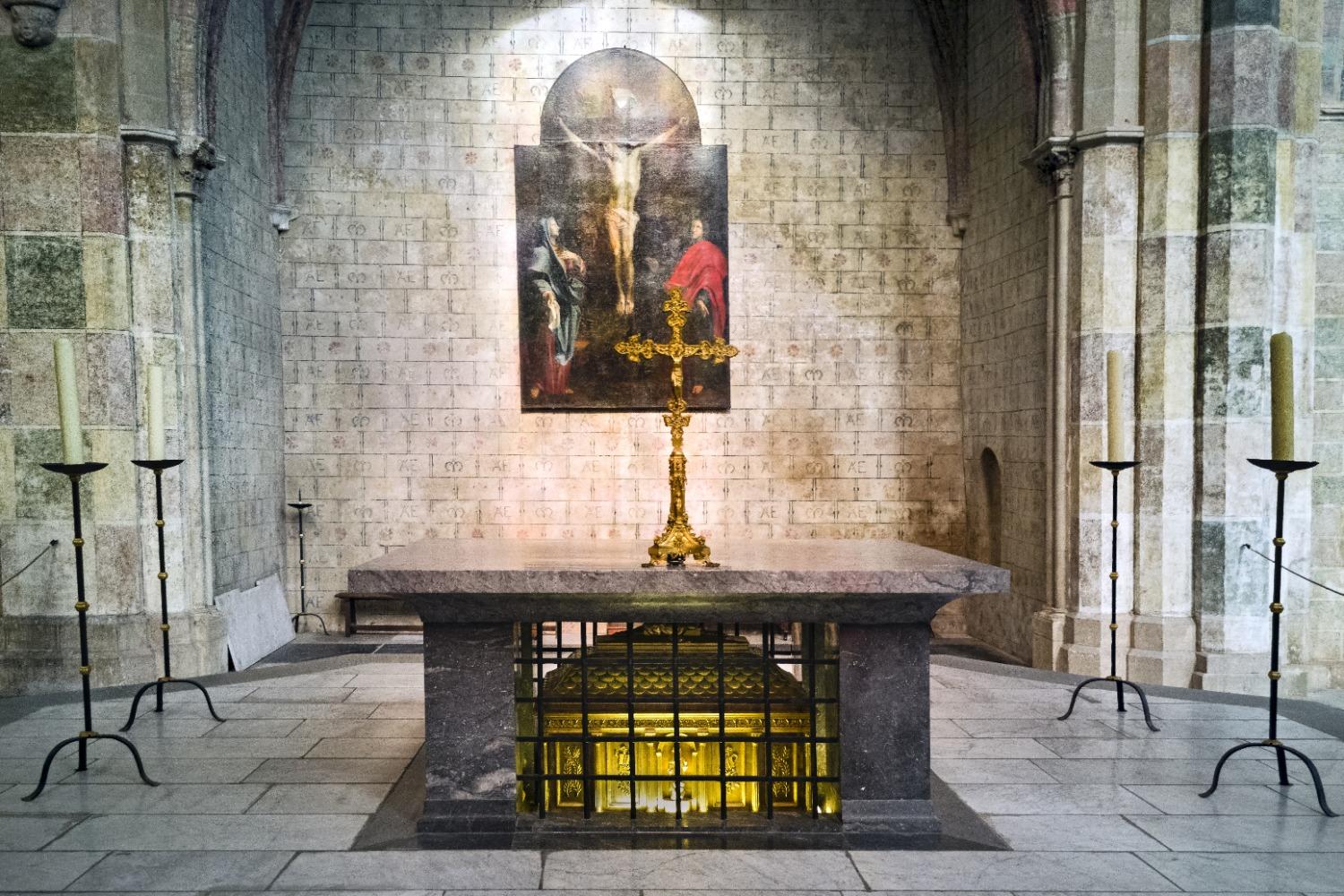
The beautiful “gothic cathedral” of theology constructed by St. Thomas Aquinas, with its harmonious structure and elegant component parts remains the standard by which Catholic theology is evaluated. The works of the Common Doctor can be extolled or bemoaned—but they cannot simply be ignored.
Less known however, is the decidedly chaotic life that his earthly relics lived upon the separation of his body and soul. In 1272, Aquinas left the University of Paris to establish a new studium for the Dominican Order, and he chose Naples for his new task, returning near to the land of his birth. In an ironic twist, after falling ill, he regained his strength at the Monastery of Monte Cassino, the famed place established by St. Benedict himself, where a young Thomas was to become abbot, but instead forsook that noble assignment to join the barely established Order of Friars Preachers.
It was at the house in Naples where St. Thomas responded to Christ that he would desire nothing else but him and that his works were but as straw. After Gregory X called the Second Council of Lyon in 1274, he summoned Thomas to present his work there. He began his journey but fell ill and stopped to rest at the Cistercian Abbey of Fossanova, where he died on March 7.
His bones, however, did not remain there much longer. Upon the request of the Dominicans, Pope Urban V agreed with a papal bull to transfer them to the convent of the Jacobins in 1369. The Dominicans at the time in France were known as the Jacobins because of their convent in Paris on the Rue Saint-Jacques.
The remains were kept there until the rise of another group known as the Jacobins rose up and overthrew the French monarchy in 1789. The new regime banned the Dominican friars from the nation and confiscated all their property. The church in Toulouse was given to the city, and the remains of St. Thomas were transferred to another church in the city. Napoleon turned the soaring gothic wonder into a barracks, removed the stained glass, and whitewashed the inside.
In 1974, the relics were oddly transferred back to the Church of the Jacobins, which is now a secular museum, restored to look like the medieval church. (It is worth mentioning that his head and arm are elsewhere, at San Domenico Maggiore in Naples, Italy.)
The tale of the transitus reflects the long history of the Church and the way in which she perdures through many times, places, and cultures. The ancient Christian devotion to holy relics continues to inspire and fascinate both the devout and the curious. St. Thomas, in the beatific vision in heaven, remains bodily in a place he never dwelt on earth.
Click here for our source (French).

The First Draught
To receive the Weekly Update in your inbox every week, along with our weekly Lectio Brevis providing insights into upcoming Mass readings, subscribe to The First Draught.
